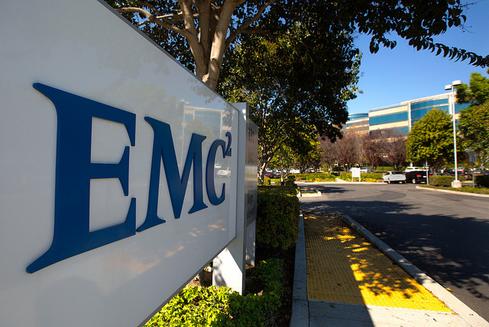EMC Open Sources ViPR With Eye On Software Future
Storage heavyweight prepares for industry shift to software-defined storage by open sourcing its storage controller.
May 22, 2015

EMC surprised the industry earlier this month when it released ViPR to the open source community. The move marked the storage giant's first venture into open sourcing a commercial product. ViPR is a gateway product aimed at creating a single management point for a heterogeneous pool of storage. The pool can consist of EMC disk arrays, flash gear and appliances connecting with a variety of Ethernet storage protocols.
Is EMC feeling charitable or is this foray into open source part of a grander plan? This is a complex question, since EMC CEO Joe Tucci and other senior management talked up all the positive and beneficial issues of the move to the IT industry at EMC World and, other than the presumed gratitude of the community, skipped over the benefit to EMC that might accrue.
To get a handle on what's behind open ViPR, we have to consider the likely future of the storage industry. The hottest bleeding-edge technology in storage today is software-defined storage (SDS). Promising to lower prices for storage hardware and software dramatically, open up competition and provide opportunities for new startups, SDS is beginning to gel out of a cloud of hype and fantasy into a concept with tsunami-like implications for the industry.
SDS basically involves stripping the complex functions of storage from dedicated proprietary controllers and parking them in low-cost virtual instances on COTS servers in a hypervised or containerized cluster. The process of separating the control plane and data services from the hardware storage units means that the latter can be simplified and cost-reduced, using packaging from ODM appliance vendors and commodity drives.
Control and services software will be created by a wider pool of vendors, mainly startup companies and will connect to other modules by yet-to-be-defined APIs. At this point, the light should be going on, because what EMC is attempting is to be the backbone and the prime mover for an ecosystem of third-party services. In other words, EMC is providing the “razor” free of charge, and it expects that a large volume of intellectual property “blades” will grow around ViPR.
It should be noted that EMC still will sell a proprietary version of ViPR. In fact, the spin-out open version is getting a new “snake” name, CoprHD, to distinguish it from the closed version. The approach looks a bit like Red Hat’s Linux strategy, but with a for-sale distribution that will have EMC-proprietary IP added to it.
EMC stands to cash in on installation and support for CoprHD, while getting a rich ecosystem for ViPR almost for free. That sounds like a plan even P.T. Barnum would have approved!
Figure 1: 
For a couple of years, EMC has been indicating that a major change in the industry is coming. ViPR itself was announced with third-party and white-box hardware support, suggesting that EMC is struggling internally to create a response to a coming wave that will likely gut the high-margin storage array/appliance business that has fueled its success.
Let’s imagine a future where hardware is a commodity and fully interchangeable, and all the storage software runs in virtual space. Suppose there are two or three key suppliers, each with a full-strength ecosystem. Let’s think of these like UNIX, Linux, and Windows. The three don’t cross over much and they all have strong adherents and branding.
There’s a good possibility this will happen. There are three powerhouse plays shaping up in storage. Red Hat (“Linux”) is fostering the open-source approach, built around its Storage Server, which is rapidly accreting features. Microsoft has Windows Storage Server (WSS), which is an ideal SDS product, since it is essentially a version of its-virtualized Windows Server. With EMC as the “UNIX” third player, we could see a lively battle for hearts and minds in the start-up community.
This approach guarantees EMC a share of the development pool that will match anyone else’s. Designs will typically fit two or three of the ecosystem models, with Windows being the most likely odd-ball. All-in-all, this is a savvy software play.
What about EMC’s hardware business? If it shrinks materially, EMC will see a mighty drop in revenues, since software typically doesn’t carry the revenue-generating ability of volume hardware. Having a Linux-like competitor will impede very high pricing of software, too.
IBM has done a great job of remaking itself as a software and services company, though it’s taken almost two decades. The amount of change was enormous. If EMC is following this model, expect a lot of restructuring costs over the next decade, and perhaps stagnation or even decline in revenue. This is, however, a much better plan than trying to compete with ODM pricing, single-digit margins, and the inevitable price war that would ensue.
As Tucci moves on to retirement, this is a crucial turning point for EMC. Will investors look back on Tucci’s tenure as the golden years? That remains to be seen.
About the Author
You May Also Like




